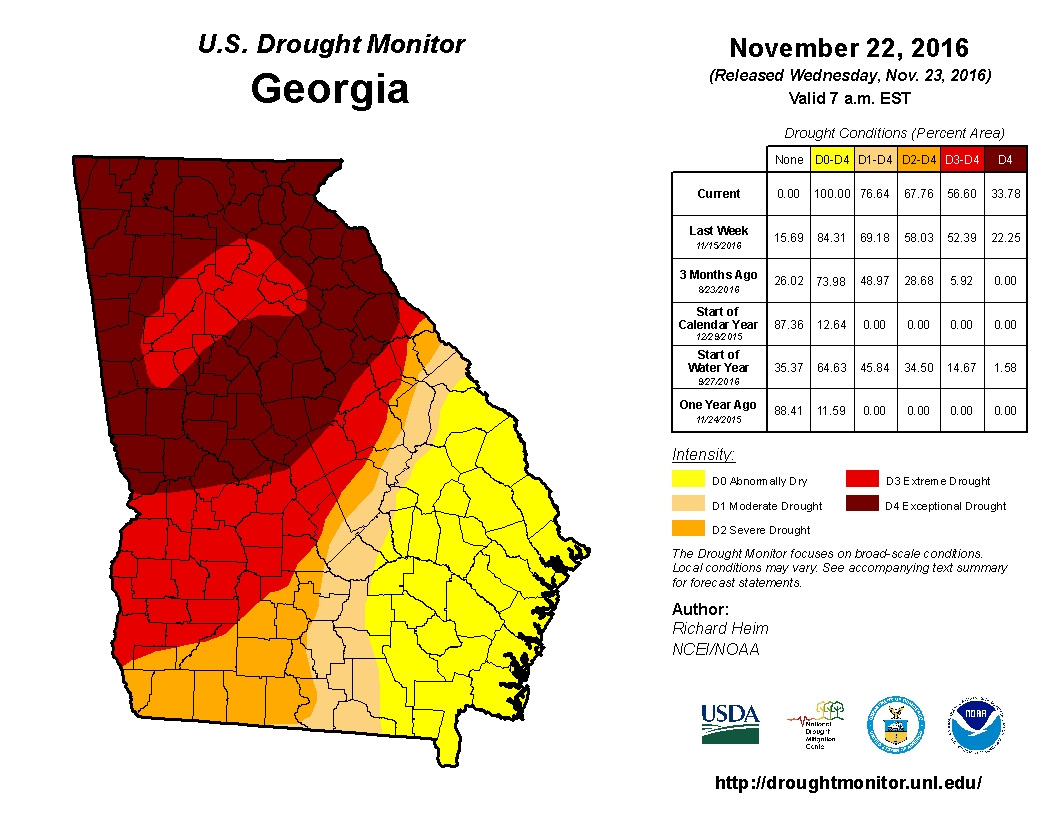My story on the 2017 economic outlook is up at Growing Georgia. Many thanks to Kent Wolfe, Director of the University of Georgia Center for Agribusiness and Economic Development, and Brady Brewer, Assistant Professor of Agricultural and Applied Economics, for their time.
Much of the advice from the experts should be obvious for any business operator: know your costs to operate and reduce them in whatever possible. However, as a farmer, there are some agronomic limitations, where revenue opportunity may come at the expense of long-term soil and plant health. I particularly like Brewer's suggestions about diversifying debt, but his recommendation to "get to 2018 with the least amount of damage" also sticks out.
Some of Brewer's comments are copied here for background:
"What we've been advising farmers is now is one of the most important times to know your cost of production. We're starting to transition farmers to where they keep accurate records. They know their input costs and exactly, down to the penny, what it takes to grow a certain crop. But that is our number one recommendation: Knowing your cost of production, what it is going to cost you is step one. Step two is choosing the crop that you think is the sure bet to cover your cost of production. … Different crops bring different risk levels, either through price risk or production risk. Certain crops take more water. Other crops might have historically variable prices. On the output side, those crops might be good in the good times when there's not much chance of going negative. But in times of lean margins, now might not be the time to take those risks. Once you know your cost of production, it's essential to pick the crop that, barring a complete catastrophe, you now is going to get you through this production year. … Let's get to 2018 with the least amount of damage."
"Take the peanut for example. Due to certain pests, whether it be nematodes or fungus, it's a crop where you don't want to mess a whole lot with the rotation. However, with that said, we have seen some farmers start to tweak their rotation a little bit. Now obviously you can't just go completely away from it. But any tweak that you can do or any slight change is going to help you. Agronomically, if you're at a certain point in your rotation you can't just go completely away from it, but farmers have shown pretty good resiliency in being able to plant a little bit extra of a certain crop in the rotation and take away from another crop in the rotation. Any acre planted to something that is going to help you persevere is going to be better. … You have to think about the long-term so that if you do persevere through the next year, you don't want to completely ruin your soil agronomically. But any tweak is going to help."
"The strong dollar is not helping us from an economic standpoint. The oversupply of corn and soybeans is really hurting the price for those two commodities. Peanuts and cotton are going to be more demand drive than corn and soybeans. But on the world market just because of the strong dollar, that demand is going to elsewhere just because it's cheaper to find those commodities elsewhere on the international stage. The two commodities that aren't oversupplied — cotton and peanuts — are being hurt by the strong dollar."
"When you speak with bankers they understand what's going in the industry of agriculture right now. They know that farmers' cash flows are tight, and they don't expect a farmer to walk in and say I'm planning for another bumper crop years … They know they're going to have some farmers coming after money, and that money may turn into a negative net loss. What they want farmers to have is a plan in place. Budgeting is going to be essential. If a farmer can go into the bank and say look, this is what my cost of production is, this is what — worse case scenario — I expect to receive at the market. It doesn't look too good, but the good news is that I have some working capital and I'm going to be able to pay you at the end of the year, or most of it. Bankers are going to understand that. From a risk standpoint, I always advise farmers to have multiple lending relationships. Any time you can diversity your banking portfolio, it's going to increase the chances that you keep receiving your lines of credit from lenders. Different lenders have different risk appetites. The more you have, the higher the probability there is that you're going to keep receiving the credit you need."



